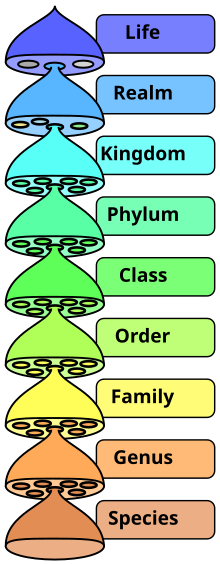
- This is a list of biological virus families and subfamilies. See also Comparison of computer viruses
This is an alphabetical list of biological virus families and subfamilies; it includes those families and subfamilies listed by the ICTV 2020 report.[1]
- For a list of individual species, see List of virus species.
- For a list of virus genera, see List of virus genera.
- For a list of virus realms, subrealms, kingdoms, subkingdoms, phyla, subphyla, classes, subclasses, orders, and suborders, see List of higher virus taxa.
Families[edit]
A[edit]
- Abyssoviridae
- Ackermannviridae
- Adenoviridae
- Adintoviridae
- Aliusviridae
- Alloherpesviridae
- Alphaflexiviridae
- Alphasatellitidae
- Alphatetraviridae
- Alvernaviridae
- Amalgaviridae
- Amnoonviridae
- Ampullaviridae
- Anelloviridae
- Arenaviridae
- Arteriviridae
- Artoviridae
- Ascoviridae
- Asfarviridae
- Aspiviridae
- Astroviridae
- Atkinsviridae
- Autographiviridae
- Avsunviroidae
B[edit]
C[edit]
D[edit]
E[edit]
F[edit]
G[edit]
- Gammaflexiviridae
- Geminiviridae
- Genomoviridae
- Globuloviridae
- Gresnaviridae
- Guelinviridae
- Guttaviridae
H[edit]
- Halspiviridae
- Hantaviridae
- Hepadnaviridae
- Hepeviridae
- Herelleviridae
- Herpesviridae
- Hypoviridae
- Hytrosaviridae
I[edit]
K[edit]
L[edit]
M[edit]
N[edit]
- Nairoviridae
- Nanghoshaviridae
- Nanhypoviridae
- Nanoviridae
- Narnaviridae
- Natareviridae
- Nimaviridae
- Nodaviridae
- Nudiviridae
- Nyamiviridae
O[edit]
P[edit]
- Papillomaviridae
- Paramyxoviridae
- Partitiviridae
- Parvoviridae
- Paulinoviridae
- Peribunyaviridae
- Permutotetraviridae
- Phasmaviridae
- Phenuiviridae
- Phycodnaviridae
- Picobirnaviridae
- Picornaviridae
- Plasmaviridae
- Plectroviridae
- Pleolipoviridae
- Pneumoviridae
- Podoviridae
- Polycipiviridae
- Polydnaviridae
- Polymycoviridae
- Polyomaviridae
- Portogloboviridae
- Pospiviroidae
- Potyviridae
- Poxviridae
- Pseudoviridae
Q[edit]
R[edit]
S[edit]
T[edit]
V[edit]
W[edit]
X[edit]
Y[edit]
Z[edit]
Subfamilies[edit]
A[edit]
B[edit]
C[edit]
D[edit]
E[edit]
F[edit]
G[edit]
H[edit]
J[edit]
K[edit]
L[edit]
M[edit]
N[edit]
O[edit]
P[edit]
Q[edit]
R[edit]
S[edit]
T[edit]
V[edit]
Z[edit]
See also[edit]
References[edit]
- ^ "Virus Taxonomy: 2020 Release". International Committee on Taxonomy of Viruses (ICTV). March 2021. Retrieved 26 May 2021.
Well, that’s interesting to know that Psilotum nudum are known as whisk ferns. Psilotum nudum is the commoner species of the two. While the P. flaccidum is a rare species and is found in the tropical islands. Both the species are usually epiphytic in habit and grow upon tree ferns. These species may also be terrestrial and grow in humus or in the crevices of the rocks.
View the detailed Guide of Psilotum nudum: Detailed Study Of Psilotum Nudum (Whisk Fern), Classification, Anatomy, Reproduction